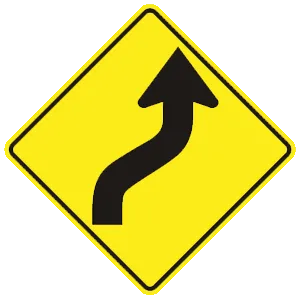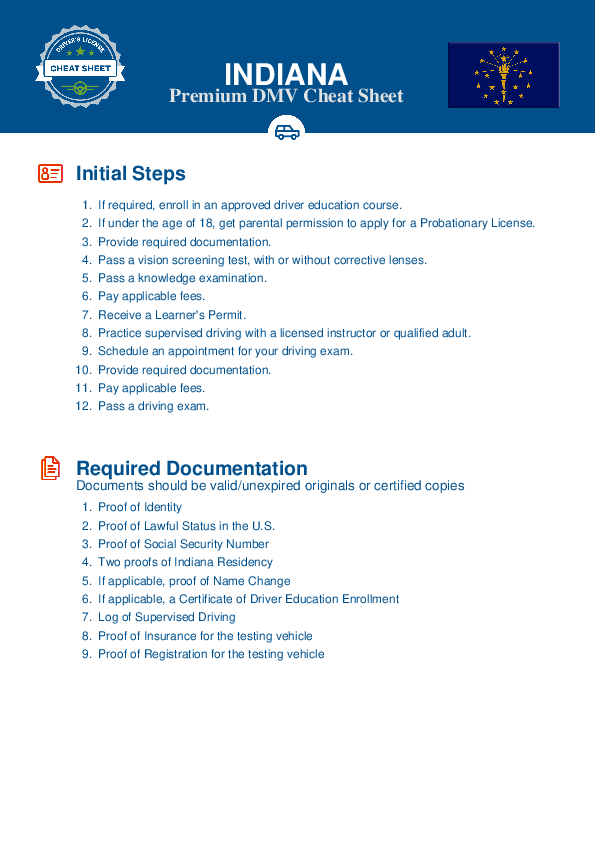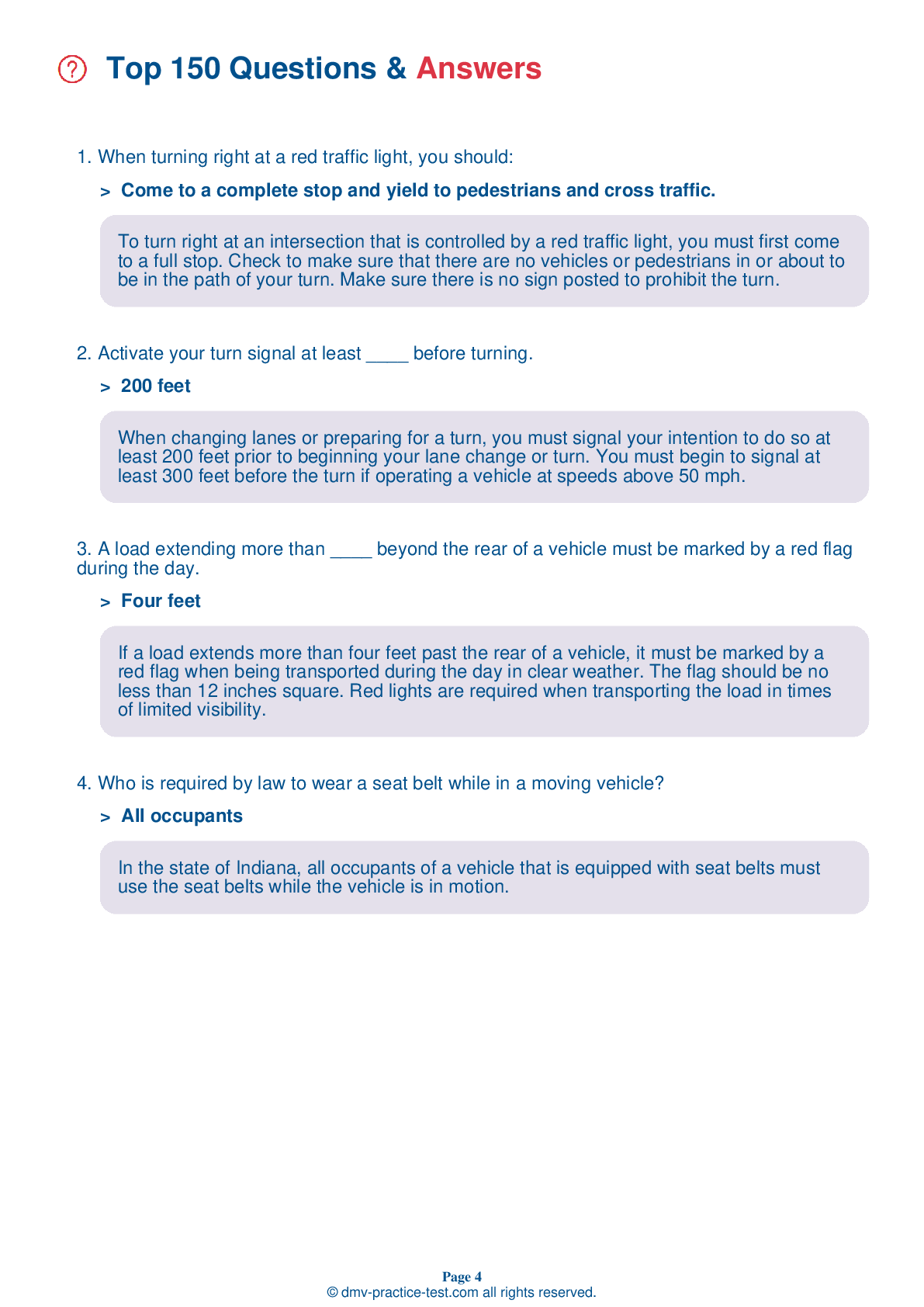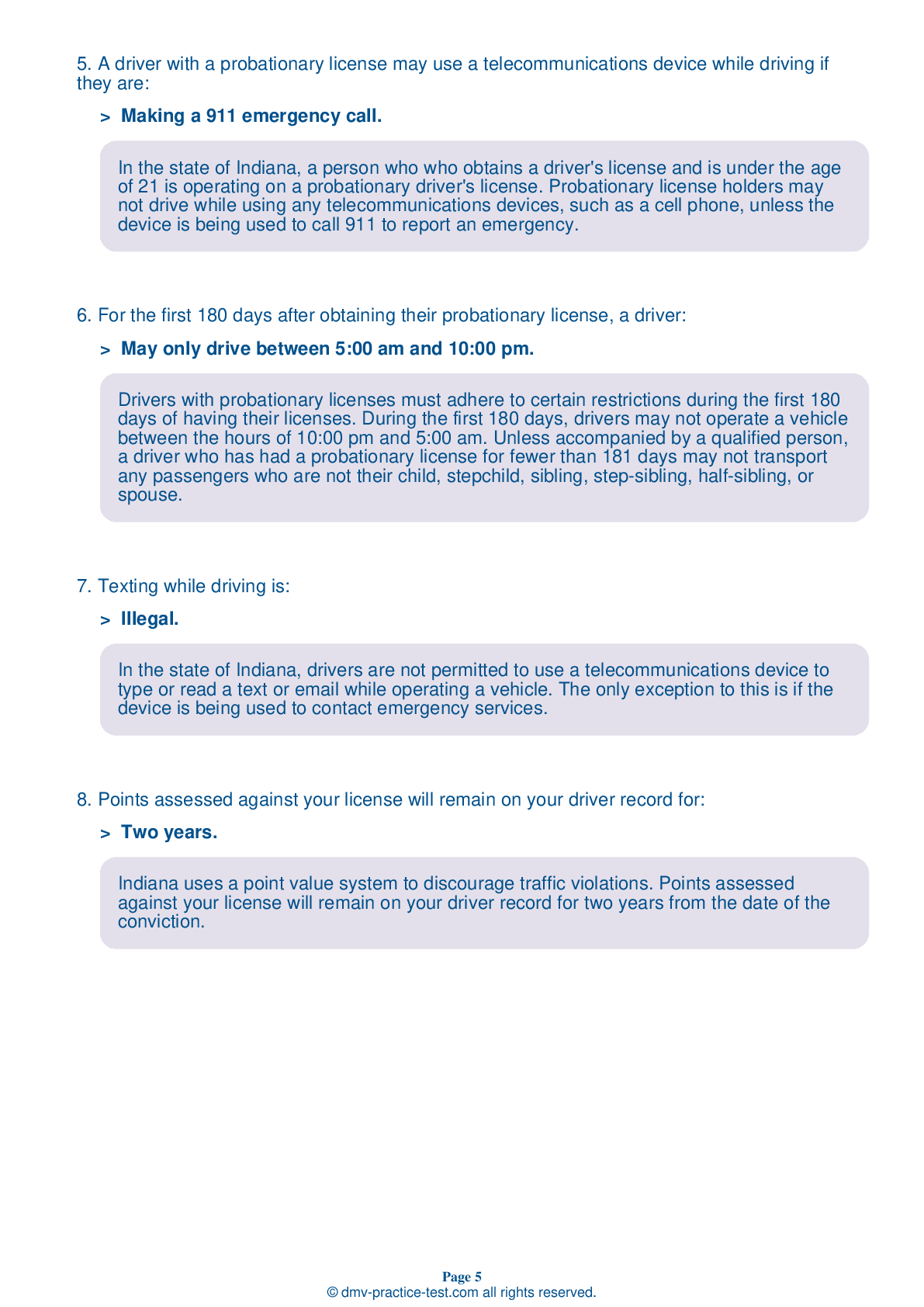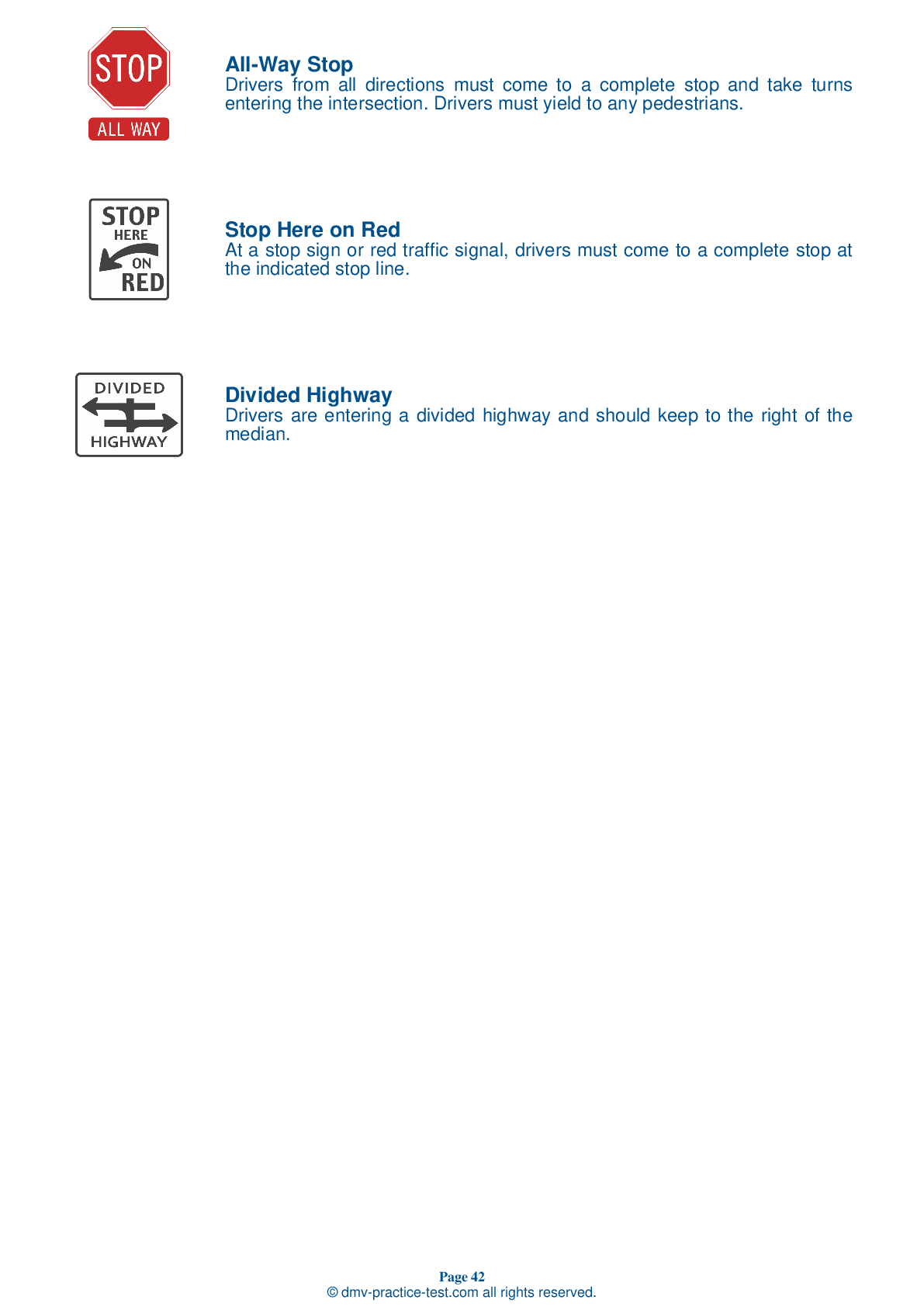FREE Indiana DMV Practice Test #20 Page 4 of 5
This set of Indiana DMV practise tests has been updated for January 2025. It includes questions based on the Indiana Driver Handbook's most significant traffic signals and laws for 2025. Use actual questions that are very similar (often identical!) to the DMV driving permit test and driver's licence exam to study for the DMV driving permit test and driver's licence exam.
On the practise exam, each question gets a tip and explanation to help you remember the concepts. The written component of the official Indiana DMV test will include questions about traffic rules, traffic signs, and driving statutes, as well as information from the Driver Handbook.
To obtain a passing grade, you must correctly answer 44 of the 50 questions. Take our DMV practise exam to help you prepare for your Indiana instruction permit or driver's licence.
The DMV exam is available in several languages.
Using any kind of testing assistance will result in an automatic fail, and the DMV may take additional action against your driver's licence, so stay away from it.
28 . How can you help prevent rear-end collisions?
Stopping suddenly can make it difficult for drivers behind you to avoid a rear-end collision. When stopping, release the accelerator to allow your vehicle to slow. Press the brake pedal by applying steady pressure, activating your brake lights and causing the vehicle to stop smoothly.
29 . This sign means:

Regulation signs regulate traffic speed and movement, displaying rules which drivers must obey. Large trucks are not permitted where this sign is posted.
30 . On a two-lane street, your vehicle is being followed by a fire engine that is not using its emergency signals. You should:
If you are being followed by an emergency vehicle that is not using its siren or flashing lights, you do not need to clear a path. Continue driving in a normal manner.
31 . When you see other drivers around you acting or reacting in anger:
When other drivers are behaving angrily, you should take action to physically and mentally distance yourself from the situation. Avoid making eye contact with them, or making body movements or gestures that could provoke them. Slow down, move over, or do whatever you safely can to put yourself out of danger.
32 . This sign means:
